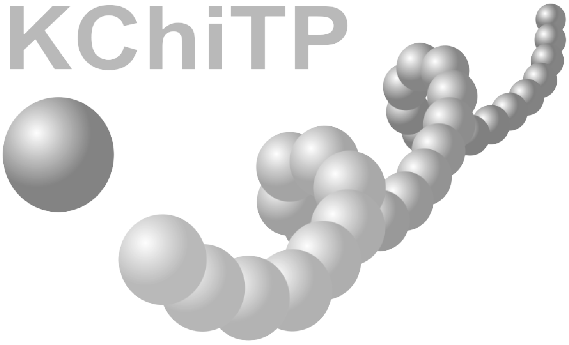CARBOPUR
PoCoDi
Kontrolowana degradacja membrany komórkowej przy użyciu polimerów amfifilowych: aktywacja przy użyciu bodźców, aktywność przeciwko Mycobacterium
Akronim: PoCoDi
Instytucja finansująca: Narodowe Centrum Nauki (2015/18/E/ST5/00222)
Współpraca naukowa: Instytut Gruźlicy i Chorób Płuc w Warszawie, Instytut Biologii Doświadczalnej PAN, Warszawa
Kierownik projektu: dr hab. inż. Dominik Jańczewski, prof. PW
Zaburzenia membrany komórkowej indukowane poprzez naturalne i syntetyczne makromolekuły są wykorzystywane do zastosowań przeciwbakteryjnych jak również przy dostarczaniu leków i genów. Celem tego projektu jest zrozumienie mechanizmu interakcji wybranych polimerów amfifilowych z membraną komórkową a w szczególności poznanie sposobu niszczenia warstwy dwulipidowej przez te polimery.
GLES
Poliestry glicerolu do zastosowań medycznych
Akronim: GLES
Instytucja finansująca: MNiSW (DI 2017 000347)
Kierownik projektu: mgr. inż. Michał Wrzecionek
Opiekun Naukowy: dr inż. Agnieszka Gadomska-Gajadhur
Projekt dotyczy opracowania metody otrzymywania nowoczesnych poliestrów glicer
olu i kwasów wielokarboksylowych. Na wytworzonych polimerach prowadzone będę modyfikacje celem zwiększenia hydrofilowości, wrażliwości na temperaturę i siłę jonową, oraz wprowadzające możliwość sieciowania. Z otrzymanych materiałów zostaną wyprzędzione włókniny dzięki współpracy z Instytutem Podstawowych Problemów Techniki PAN. Tak wytworzone rusztowania komórkowe zostaną poddane ocenie poprzez prowadzenie hodowli komórkowych. Projekt został sfinansowany ze środków budżetowych na naukę przewidzianych na lata 2018–2022 jako projekt badawczy w ramach programu „Diamentowy Grant” (DI 2017 000347 (ID 395680)).
Ukończone Projekty
BATLIT
Novel Polymer Electrolytes for Application in Lithium and Lithium-Ion Batteries
Project Acronym: BATLIT
Area of the Project: lithium-ion batteries, ion conducting electrolytes, lithium salts, polymer electrolytes
Summary: The project concerns the development of new polymer electrolytes (in the form of thin membranes) of increased share of cationic conductivity. In the hitherto studies, anions are the dominating electric charge carriers, which leads to unfavorable salt concentration gradient and worsening of the battery characteristics. Achieving an increase in the lithium cations transference numbers values assures the batteries a longer operation time, smaller decrease in capacity, and greater current densities. The obtaining of such type of electrolytes is one of the conditions of the development of lithium-ion batteries predicted for charging electronic devices, in hybrid car engines and in large devices for storing energy acquired from renewable sources, among others.
Within this project it is expected to increase the share of cation conductivity of lithium electrolytes by reactions of complexing salt anions with boron or aluminum compounds showing Lewis acid properties. In addition, an increase in the degree of salt dissociation, decrease in the share of ion associates and increase in cation mobility are expected, which should assure higher ionic conductivity. The utilization as aluminum receptors of aluminum carboxylates with incorporated oligoether substituents which, as appears from the studies of the Principal Investigator, are very efficient anion traps, is planned. As boron derivatives, compounds containing fluorine substituents will be obtained, which due to the strong induction effect, increase the deficiency of electrons on the boron atom.
The complex salts obtained will be applied as components of solid and gel polymer electrolytes. For selected electrolytes, studies will be carried out on their flame-retardant properties by introducing ionic liquids. Electrochemical characterization of the electrolytes obtained will cover determination of ionic conductivity and electrochemical stability, as well as determination of lithium cations transference numbers.
Project Promoter: Warsaw University of Technology, Faculty of Chemistry
Principal Investigator: Dr. Ewa Zygadło-Monikowska
Funding source: Norwegian Financial Mechanism, Polish-Norwegian Research Programme, Small Grant Scheme 2012 which provides support for research projects implemented by women specializing in the area of technical sciences.
Norwegian Financial Mechanism and the European Economic Area Financial Mechanism, i.e. EEA and Norway Grants, are a form of foreign aid granted by Norway, Iceland and Liechtenstein to new UE Member States. The funds are connected with the Polish accession to the European Union and the simultaneous accession to the European Economic Area (EU + Iceland, Liechtenstein, Norway and Switzerland). Donor countries benefit from access to the internal market of the European despite the fact that they are non-EU members. Currently, the second edition of the grants is being implemented, it covers the period 2009-2014. The previous edition covered the period 2004-2009.
TEAM
New solution processable organic and hybrid (organic/inorganic) functional materials for electronics, optoelectronics and spintronics”
The main scope of the research is the design and synthesis of new organic semiconductors, organic magnets and inorganic nanocrystals to be used in various organic and hybrid (organic/inorganic) electronic and spintronic devices fabricated solely by solution processing methods. This mainly involves: n- and p-channel as well as ambipolar FETs, bulk heterojunction-type PCs and organic/inorganic PDs and magnetic photoswitches (MPS).
The project duration: March 1st 2012 – June 30th 2015.
The research within the project is performed in the research group of Professor Adam Proń at the Faculty of Chemistry, Warsaw University of Technology, and followed by the TEAM programme of the Foundation for Polish Science.
The research will be done in collaboration with the leading European groups of:
- Professor Ronald Österbacka, Abo Akademi University Department of Physics, Turku, Finland,
- Dr David Djurado, Commissariat a l’Energie Atomique, Grenoble, France,
- Professor Serge Lefrant, Institut des Matériaux Jean Rouxel, Université de Nantes, Nantes, France
The project team will consist of young researchers and students selected in a competitive procedure. The candidates are cordially invited to see our recruitment procedure.
Project realized within the TEAM programme of the Foundation for Polish Science co-financed from European Regional Development Found within Innovative Economy Operational Programme.
BIOPOL
Technologia otrzymywania biodegradowalnych poliestrów
z wykorzystaniem surowców odnawialnych
Programu Operacyjnego Innowacyjna Gospodarka (POIG), 2007-2013. Numer umowy: POIG.01.01.02-10-025/09
Beneficjent: Centrum Badań Molekularnych i Makromolekularnych PAN, Łódź
Kierownik projektu: prof. dr hab. Stanisław SŁOMKOWSKI
Kierownik projektu w PW: prof. dr hab. inż. Zbigniew Florjańczyk
Projekt jest realizowany przez zespoły badawcze:
Centrum Badań Molekularnych i Makromolekularnych PAN (CBMM PAN)
Instytutu Biopolimerów i Włókien Chemicznych (IBWCh)
Wydziału Chemicznego Politechniki Warszawskiej: KChiTP oraz LPT
Strona internetowa całego projektu: www.biopol.cbmm.lodz.pl
Celem ogólnym projektu jest przeprowadzenie strategicznych badań i opracowanie innowacyjnych rozwiązań technologicznych dotyczących przetwarzania odnawialnej bazy surowcowej służących tworzeniu nowych asortymentów produktów z polimerów biodegradowalnych na bazie źródeł odnawialnych, szczególnie polimeru wytwarzanego z kwasu mlekowego (znanego pod nazwą „polilaktyd”) a także biodegradowalnych poliestrów z dostępnych krajowych surowców.
Cel ogólny spełniony zostanie w konsekwencji osiągnięcia celów szczegółowych projektu, czyli:
- Opracowania technologii wytwarzania polilaktydu (PLA) w modelowej instalacji badawczej (instalacja PLA)
- Opracowania technologii wytwarzania alifatyczno-aromatycznego biodegradowalnego poliestru (IBPE) w modelowej instalacji badawczej (instalacja IBPE)
- Wdrożenia wyników badań procesów modyfikacji chemicznej PLA, IBPE oraz układów PLA-IBPE
- Wdrożenia wyników badań procesów przetwarzania PLA, IBPE, PLA-IBPE






